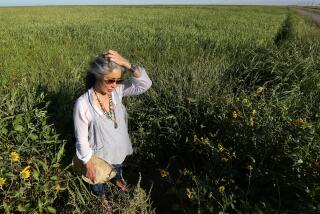After 100 years, San Gabriel Nursery & Florist continues to bloom
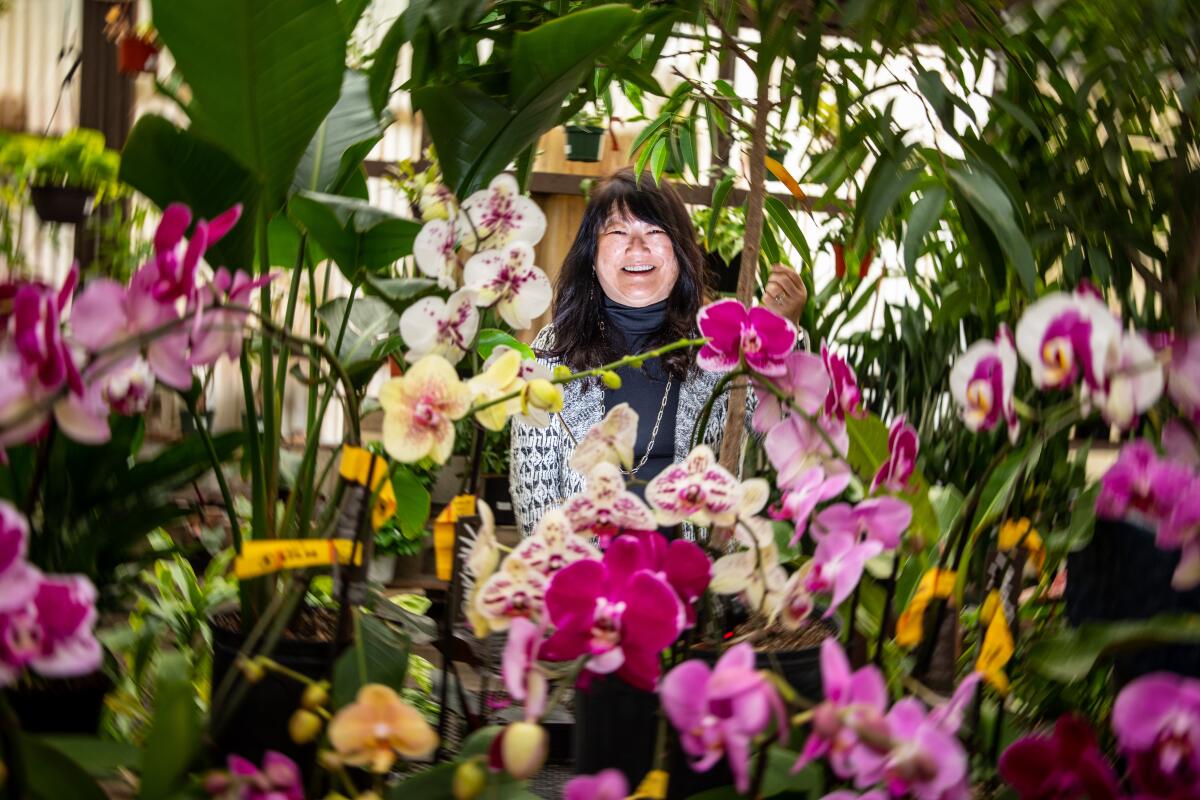
- Share via
Seeking new opportunities, Fred Yoshimura left his home in Yamaguchi, Japan, for California in 1917. There was no family to greet him when he arrived. He was 21.
After a false start as a rice farmer in San Francisco, he found his way to Southern California, where he made a living as a landscaper, honing his skills as a gardener and maintaining sprawling lawns across the San Gabriel Valley.
While working in South Pasadena, he met Mitoko Naito, a maid from Hiroshima. The two first-generation immigrants — known in the Japanese diaspora as issei — eventually married.
By then Yoshimura had saved enough money to lease a parcel of land that he used to open Mission Nursery in 1923. It would blossom into a major commercial success now known as San Gabriel Nursery & Florist, which this year is celebrating its 100th anniversary.
But it didn’t come easily.
The Yoshimura family worked hard at their business but briefly lost it during World War II when President Franklin D. Roosevelt authorized the forced relocation and incarceration of 120,000 people of Japanese descent — two-thirds of them citizens — in February 1942 after the attack on Pearl Harbor. Their story is a testament to their determination to overcome all obstacles, including rampant racism and social injustice, in hopes of making a better life.
Today, at the entrance to the flower shop, a red anthurium plant sits next to a family shrine, which includes a large photograph of Fred and Mitoko Yoshimura hanging on the wall.
“I can still hear their voices,” their granddaughter Mary Ishihara Swanton, 55, said. “They never leave you. They’re always there.”
As Swanton makes her way through the family’s two-acre nursery, she calls her 88-year-old father, Saburo Ishihara, who still works five days a week at the family business and who recently had cataract surgery.
Many of Swanton’s relatives who watched the nursery grow over the years are now gone. Her aunt Margie Yoshihashi died at 92 in January, just a few days after the start of the new year.
“It was her goal for the company to make it to the 100th anniversary,” Swanton said. “That was her dream.”
For years, Yoshihashi greeted customers and oversaw the flower shop. And she continued to call Ishihara after she retired to remind him to turn off the coffee maker at the end of the day.
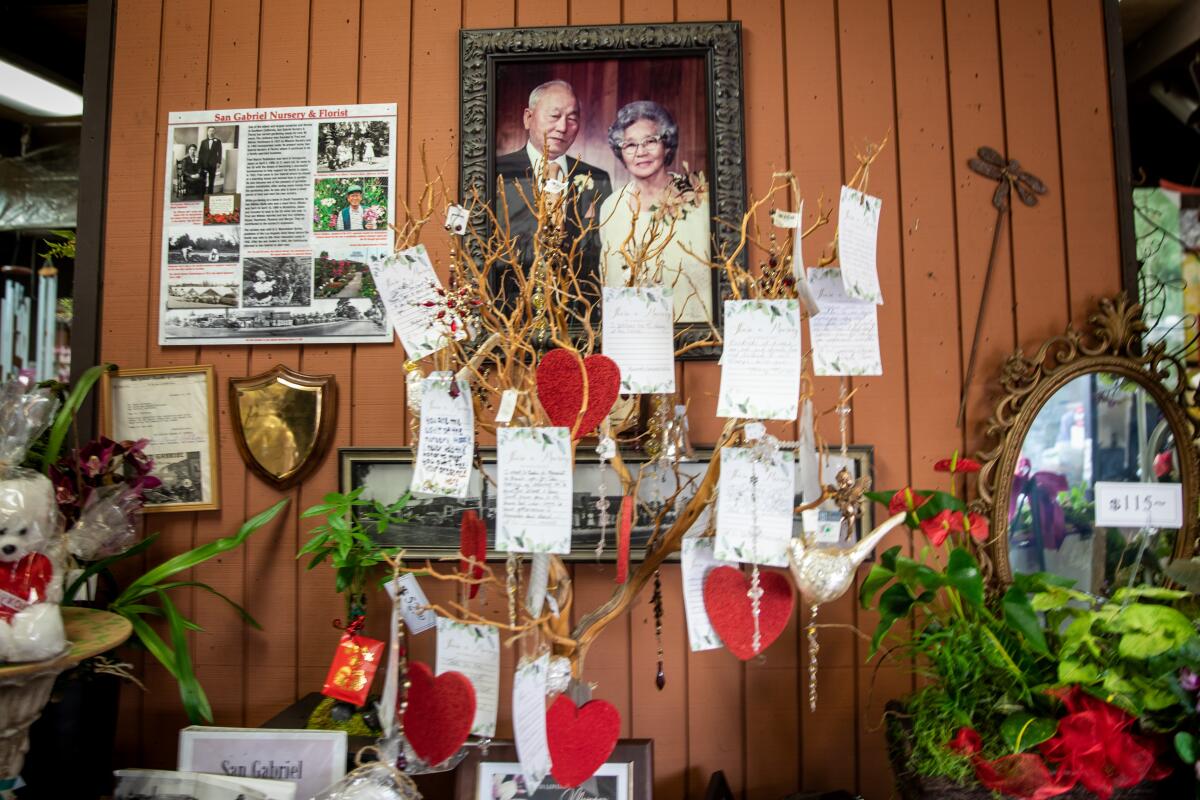
The family’s legacy began with cuttings, the pruned clippings of plants that Fred Yoshimura gathered while he worked as a landscaper.
Swanton’s grandmother did not know much about gardening, but she did her best to plant the clippings at the family’s new nursery. Over time, their business grew azaleas, camellias, bonsai and other hard-to-find plants the Yoshimura family introduced to the California horticulture scene.
By the 1930s, the family had solidified their reputation as pillars of the community, Swanton said, as her grandfather worked to foster a better understanding of Japanese and American cultures.
The Yoshimuras had four children: Hayao, Raymond, Florence and Margie, who were second-generation Japanese Americans or nisei.
Their business flourished and they found support from the community despite anti-Asian discrimination that was pervasive throughout the country.
In 1913, California passed the Alien Land Law, which barred Asian immigrants from owning agricultural land. The law was spurred by fears that immigrant entrepreneurs would take over the farming industry, USC history lecturer Susan Kamei said.
“By the 1940s, Japanese American farmers were producing 40% of California’s commercial vegetable crops,” Kamei said.
Tensions boiled over after Dec. 7, 1941, when the Japanese Empire attacked Pearl Harbor, launching the U.S. into World War II. The day after the attack, Fred Yoshimura was picked up by federal agents, interrogated and detained for several months, Swanton said.
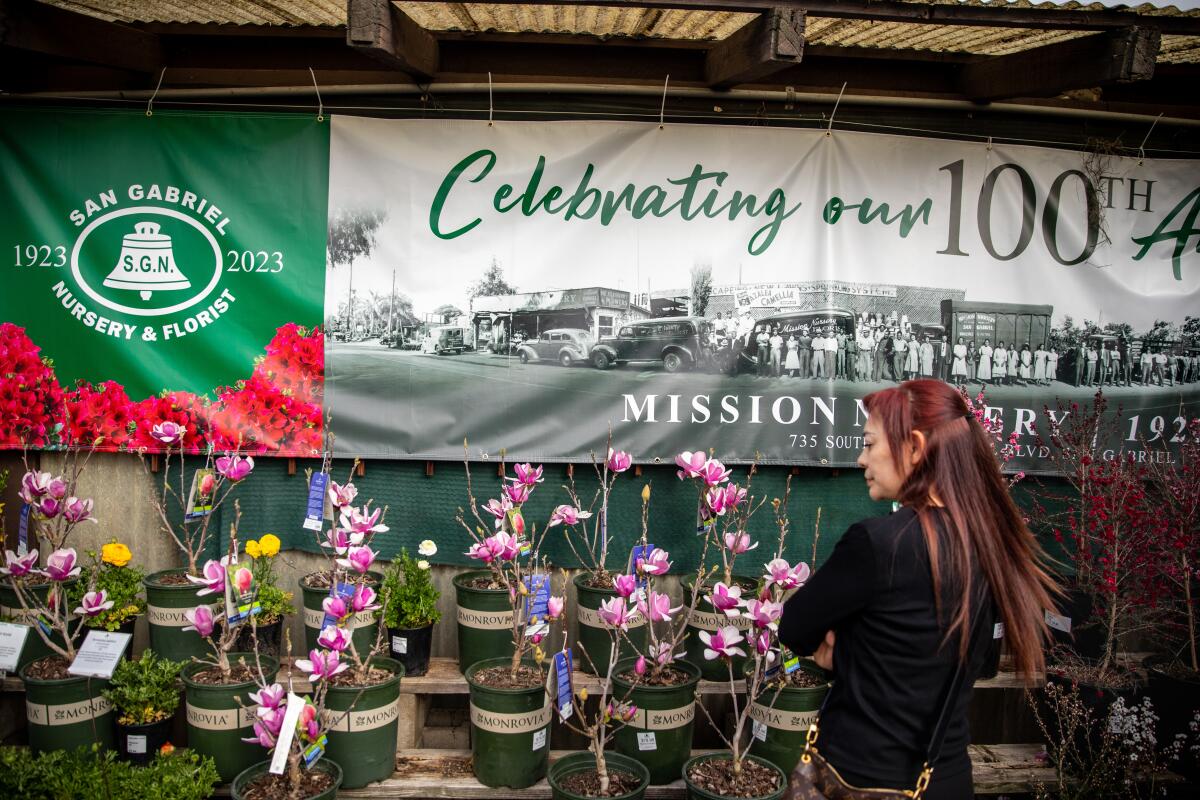
In the throes of wartime hysteria, it was no surprise then that Japanese Americans were targeted by the government, Kamei said.
“In the event of the anticipated war with Japan, [the U.S. government] knew exactly where these people were and immediately found all the homes of Japanese Americans, including my dad’s family, and then arrested those that they considered to be community leaders,” Kamei said.
While Fred Yoshimura was missing, Mituko Yoshimura continued to run the nursery, but the U.S. government notified her the family would be relocated to a wartime prison camp, Swanton said.
“It was the most difficult time in her life, and my grandmother was basically doing it all by herself,” Swanton said. “My aunt or my grandmother didn’t really talk about their time in the camps. I thought as a kid that camp was like summer camp. It wasn’t until I was older that I realized what they went through.”
Mitoko Yoshimura scrambled to settle the family’s loans and figure out what to do with the business. Several men showed up at the nursery and aggressively made low offers to buy the business, Swanton said, but her grandmother refused.
She received another offer from E. Manchester Boddy, the publisher of the Los Angeles Daily News, who agreed to buy the business, the remaining stock and the lease on the property, Swanton said. He agreed to pay the family in installments. Boddy would later relocate the nursery’s stock to his estate in La Cañada Flintridge, which became today’s Descanso Gardens.
The Yoshimura family was eventually relocated to a prison camp on an Indian reservation in Gila River, Ariz.
Swanton knows the family business ended on April 8, 1942, because the business ledger abruptly stopped on that date. While the family was incarcerated, Swanton’s uncle Hayao was drafted to serve in the U.S. Army.
Later that summer, the family was reunited with Fred Yoshimura.
While incarcerated, Mitoko Yoshimura was paid by the federal government to run the camp’s flower shop, and she arranged a bouquet that was presented to Eleanor Roosevelt during her visit to the camp. Swanton’s family continued to attend school while at the camp and posed for school portraits in yearbooks.
The trauma of the camps was seldom discussed among the family. Todd Swanton, Mary Ishihara Swanton’s husband, recalls how later in life Ichiro Yoshihashi, her uncle by marriage, would grow impatient with people who complained about the experience.
That mentality is common in the Japanese culture, Kamei said.
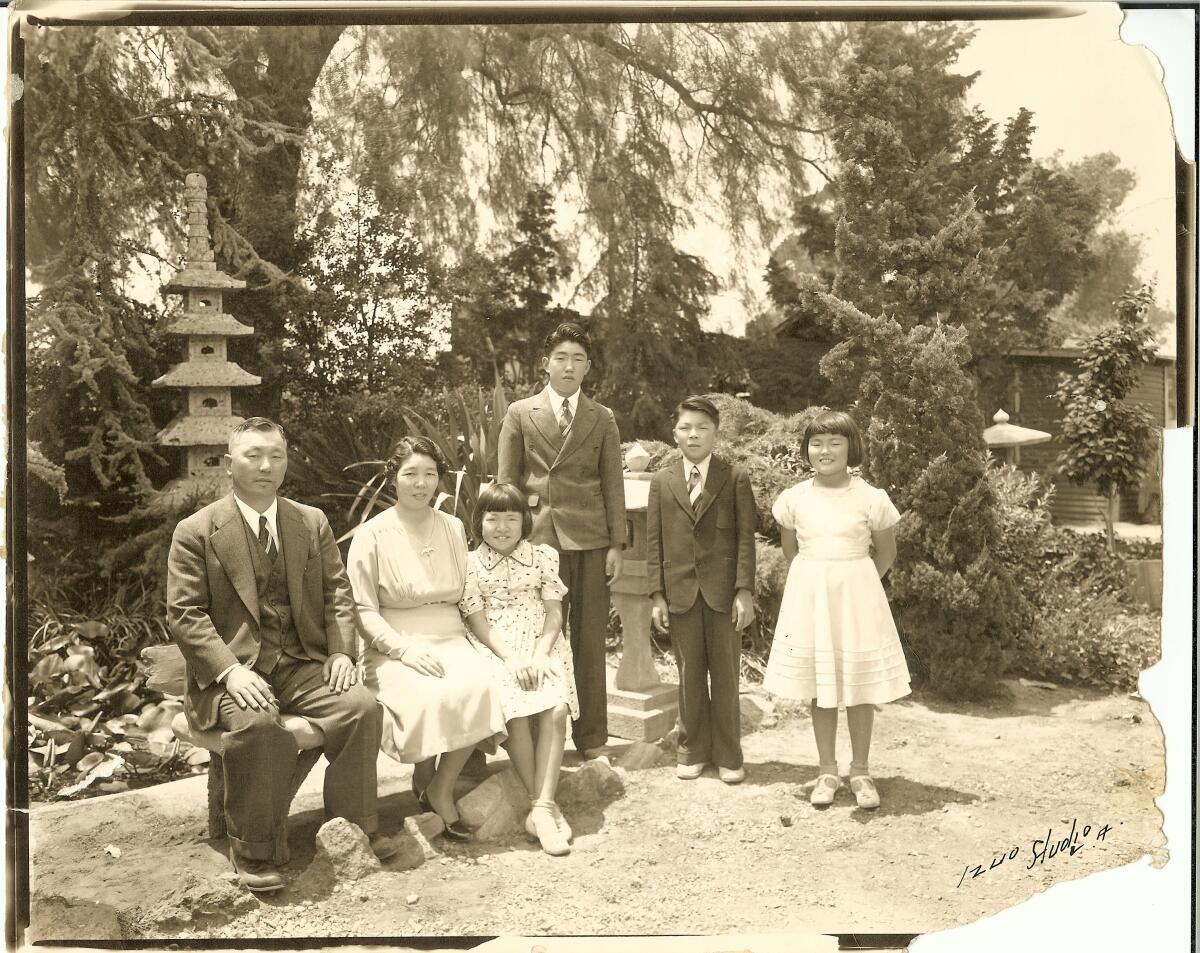
“Kodomo no tame ni, or for the sake of our children. It’s about not wanting to burden our children or our descendants with our trials and challenges,” Kamei said.
After the war ended in 1945, the camps were disbanded and the Yoshimuras were allowed to return home. But their business was gone and they were forced to start over. A family friend, Gene Perez, watched over the family’s belongings while they were gone. Many other people in the community who were hostile to the family at the start of the war suddenly became warm to the Yoshimuras, Swanton said.
It took years for the nursery to rebuild its stock of flowers, trees and plants. Fred Yoshimura and his sons again started to build up their clippings from landscaping. He also planted pansies, Swanton said, which grew fast and quickly helped bring in some money.
The family had to rename the business San Gabriel Nursery & Florist. The new nursery was built across the street from the old business.
Other Japanese citizens who were incarcerated during the war were offered a place to stay and for a time tents were set up at the nursery, Swanton said.
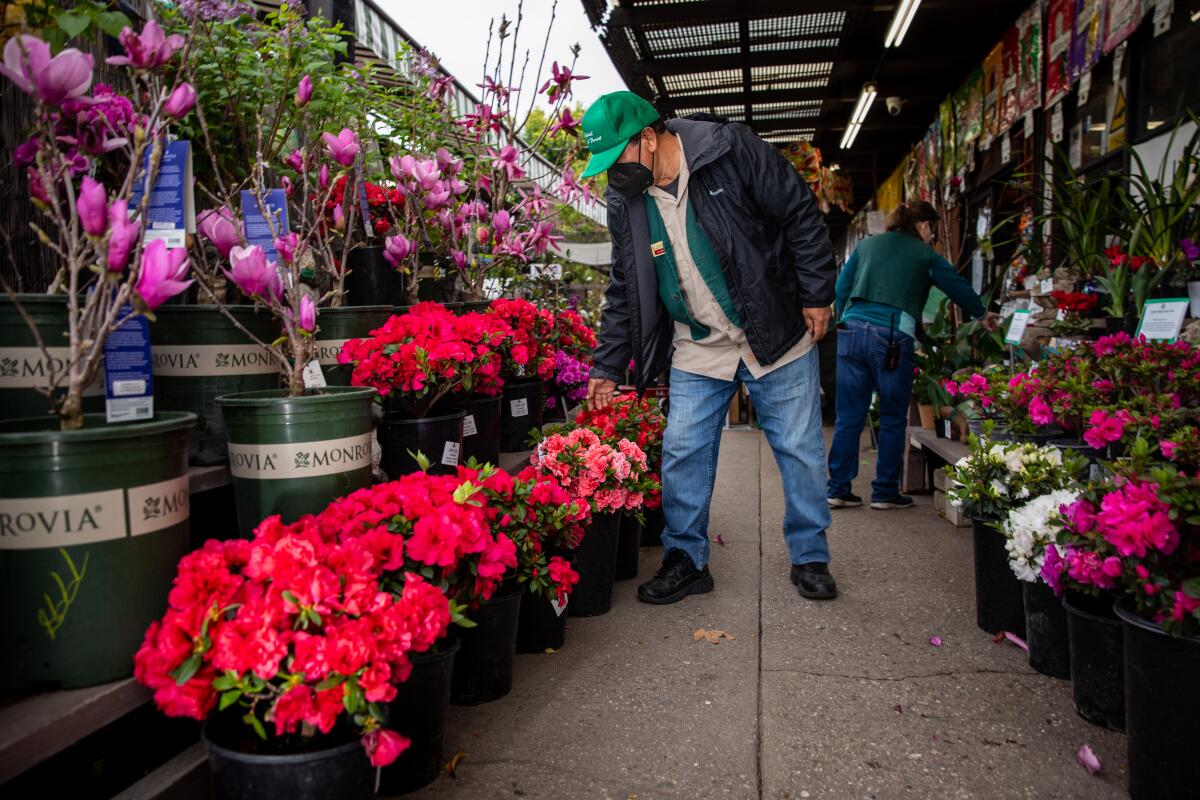
While the family was in the camps, Raymond Yoshimura befriended Ichiro Yoshihashi, and the two would go on to earn their horticulture degrees from Ohio State. Eventually they would work together at the family nursery and expand the business, installing greenhouses and maintaining a wholesale store.
Raymond Yoshimura would go on to hybridize several plants, including the Mission Bell azalea that became a popular draw for the nursery, Swanton said.
By 1957, the nursery had begun to host foreign exchange students from Japan. That was when Saburo Ishihara, Swanton’s father, first arrived in California.
He had attended horticulture school in Tokyo, spoke English and was fascinated with American culture, all traits that impressed Fred Yoshimura. He immediately put Ishihara to work in the flower shop.
“On the first day, he picked me and told me to stay here,” Ishihara said, pointing to the floor inside the shop.
Ishihara stayed for one year and went back to Japan, but he returned to San Gabriel to marry Florence Yoshimura. Ichiro Yoshihashi married Margie Yoshimura, Swanton’s aunt.
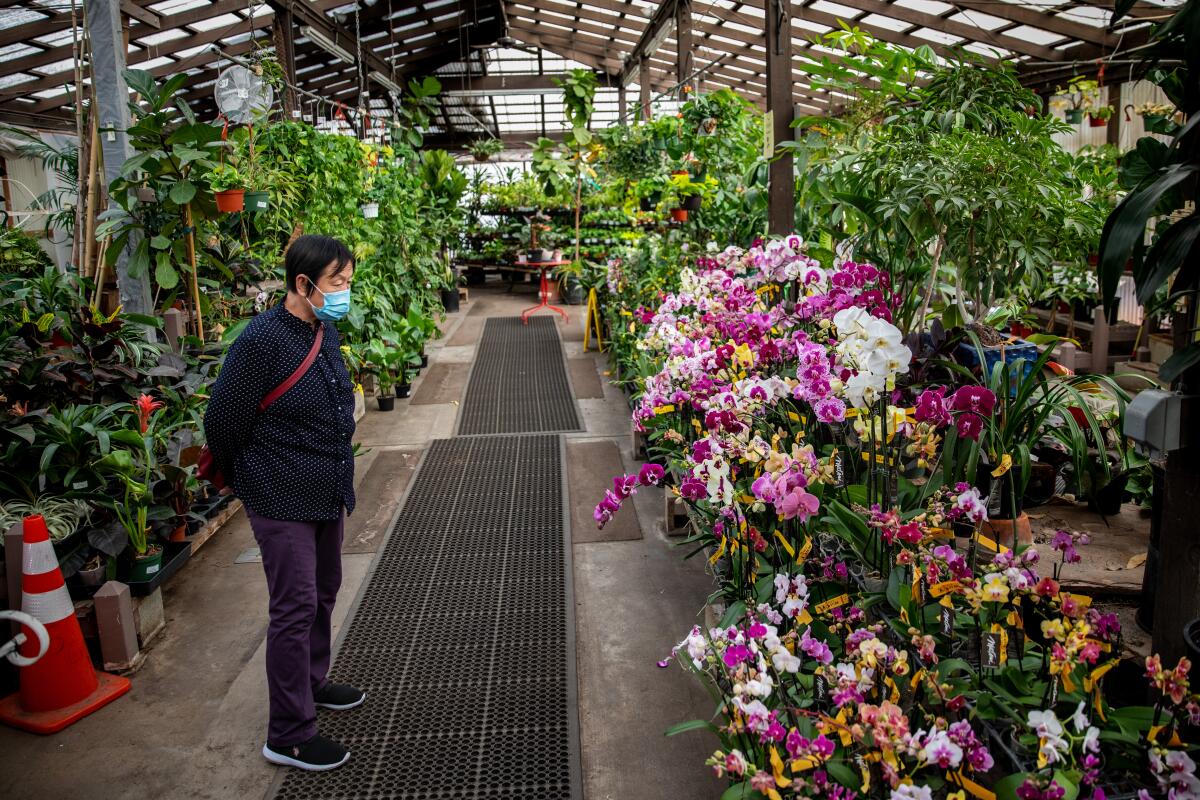
Shortly after Swanton was born, the retail shop was set on fire by an arsonist. Many of the family records, which were already scattered due to the time in the camps, were destroyed, Swanton said.
Though the fire destroyed the storefront, the family managed to resume their business within a few days, and within a year the new store was built.
Florence Yoshimura died when Swanton was a child. Her aunt and father raised her.
At her aunt’s funeral this year, people remembered Yoshihashi as a person who could meet any challenge. Despite the incarceration of family members, the fire and all the other setbacks they faced, Swanton said, the nursery survived.
“Whatever my grandma had to deal with is way worse than what I have to deal with,” Swanton said.
Over the last 25 years, Swanton has run the business together with her father, husband and other employees. There are reminders everywhere of the past and those who came before them.
Next to the nursery is a parking lot, she points out, where her grandparents’ little yellow house once stood, the family’s history forever linked with the family business.
- Share via
Watch L.A. Times Today at 7 p.m. on Spectrum News 1 on Channel 1 or live stream on the Spectrum News App. Palos Verdes Peninsula and Orange County viewers can watch on Cox Systems on channel 99.
More to Read
Sign up for Essential California
The most important California stories and recommendations in your inbox every morning.
You may occasionally receive promotional content from the Los Angeles Times.



